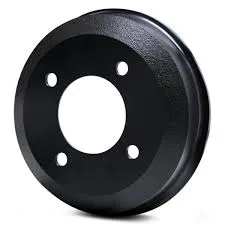
-
 Afrikaans
Afrikaans -
 Albanian
Albanian -
 Amharic
Amharic -
 Arabic
Arabic -
 Armenian
Armenian -
 Azerbaijani
Azerbaijani -
 Basque
Basque -
 Belarusian
Belarusian -
 Bengali
Bengali -
 Bosnian
Bosnian -
 Bulgarian
Bulgarian -
 Catalan
Catalan -
 Cebuano
Cebuano -
 Corsican
Corsican -
 Croatian
Croatian -
 Czech
Czech -
 Danish
Danish -
 Dutch
Dutch -
 English
English -
 Esperanto
Esperanto -
 Estonian
Estonian -
 Finnish
Finnish -
 French
French -
 Frisian
Frisian -
 Galician
Galician -
 Georgian
Georgian -
 German
German -
 Greek
Greek -
 Gujarati
Gujarati -
 Haitian Creole
Haitian Creole -
 hausa
hausa -
 hawaiian
hawaiian -
 Hebrew
Hebrew -
 Hindi
Hindi -
 Miao
Miao -
 Hungarian
Hungarian -
 Icelandic
Icelandic -
 igbo
igbo -
 Indonesian
Indonesian -
 irish
irish -
 Italian
Italian -
 Japanese
Japanese -
 Javanese
Javanese -
 Kannada
Kannada -
 kazakh
kazakh -
 Khmer
Khmer -
 Rwandese
Rwandese -
 Korean
Korean -
 Kurdish
Kurdish -
 Kyrgyz
Kyrgyz -
 Lao
Lao -
 Latin
Latin -
 Latvian
Latvian -
 Lithuanian
Lithuanian -
 Luxembourgish
Luxembourgish -
 Macedonian
Macedonian -
 Malgashi
Malgashi -
 Malay
Malay -
 Malayalam
Malayalam -
 Maltese
Maltese -
 Maori
Maori -
 Marathi
Marathi -
 Mongolian
Mongolian -
 Myanmar
Myanmar -
 Nepali
Nepali -
 Norwegian
Norwegian -
 Norwegian
Norwegian -
 Occitan
Occitan -
 Pashto
Pashto -
 Persian
Persian -
 Polish
Polish -
 Portuguese
Portuguese -
 Punjabi
Punjabi -
 Romanian
Romanian -
 Russian
Russian -
 Samoan
Samoan -
 Scottish Gaelic
Scottish Gaelic -
 Serbian
Serbian -
 Sesotho
Sesotho -
 Shona
Shona -
 Sindhi
Sindhi -
 Sinhala
Sinhala -
 Slovak
Slovak -
 Slovenian
Slovenian -
 Somali
Somali -
 Spanish
Spanish -
 Sundanese
Sundanese -
 Swahili
Swahili -
 Swedish
Swedish -
 Tagalog
Tagalog -
 Tajik
Tajik -
 Tamil
Tamil -
 Tatar
Tatar -
 Telugu
Telugu -
 Thai
Thai -
 Turkish
Turkish -
 Turkmen
Turkmen -
 Ukrainian
Ukrainian -
 Urdu
Urdu -
 Uighur
Uighur -
 Uzbek
Uzbek -
 Vietnamese
Vietnamese -
 Welsh
Welsh -
 Bantu
Bantu -
 Yiddish
Yiddish -
 Yoruba
Yoruba -
 Zulu
Zulu
drum brake pads
Understanding Drum Brake Pads A Comprehensive Overview
When it comes to vehicle safety, the braking system plays a crucial role. Among the various types of braking components, drum brake pads are an essential part of many automobiles, especially in older models and some modern designs. Understanding their function, composition, and maintenance can help drivers ensure optimal performance and safety on the road.
What Are Drum Brake Pads?
Drum brake pads, more accurately referred to as brake shoes, are part of the drum brake system. This system consists of a cylindrical drum that rotates with the wheel and brake shoes that press against the inner surface of the drum to create friction, thereby slowing down or stopping the vehicle. Unlike disc brakes that utilize flat brake pads, drum brakes work by expanding the shoes against the drum, which allows for effective deceleration.
Composition and Materials
Brake shoes are typically made from a combination of materials designed to withstand high temperatures and friction. Common materials include
1. Organic Compounds These shoes are made from materials like rubber and resin. They provide smooth braking and are quieter but may wear out faster. 2. Semi-Metallic Materials Composed of metal fibers mixed with organic substances, these pads offer better heat dissipation and durability, making them suitable for various driving conditions.
3. Ceramic Materials Although less common in drum brakes, some high-performance applications use ceramic materials that provide excellent stopping power while minimizing dust and noise.
drum brake pads

Importance of Maintenance
Regular maintenance of drum brake pads is essential for ensuring the safety and efficiency of a vehicle's braking system. Worn-out brake shoes can lead to decreased braking performance, which poses a serious safety risk. Key maintenance practices include
- Regular Inspections Drivers should routinely check the brake shoes for wear and tear, especially if they notice unusual noises or decreased braking effectiveness. - Replacement Most brake shoes need replacement every 30,000 to 70,000 miles, but this can vary based on driving habits and conditions. Signs that replacement is needed include a grinding noise or the vehicle pulling to one side during braking.
- Cleaning Keeping the drum and shoes clean can enhance performance. Dust and debris can accumulate and affect the contact surface, reducing braking efficiency.
Advantages of Drum Brake Pads
Despite the rise in popularity of disc brakes, drum brakes still offer certain advantages. They are typically less expensive to produce and can provide more effective braking performance in specific situations, such as when the vehicle is heavily loaded. Additionally, drum brakes often perform better in wet conditions because the enclosed design helps prevent water from reaching the friction surface.
Conclusion
In conclusion, drum brake pads are a vital component of many braking systems, contributing to the overall safety and performance of a vehicle. Understanding their function, composition, and the importance of maintenance can empower drivers to make informed decisions regarding their vehicle's braking system. Regular inspections and timely replacements are key to ensuring that your braking system operates efficiently, ultimately keeping you and your passengers safe on the road.
-
What Are Drum BrakesNewsJul.07,2025
-
Understanding Brake Drum MaterialNewsJul.07,2025
-
Semi-Trailer Brake Drum: A Key Component for Extreme Loads and Long-Distance TransportNewsJul.07,2025
-
Drum Brake Pads for SaleNewsJul.07,2025
-
Brake Drums for SaleNewsJul.07,2025
-
Brake Drum ManufacturerNewsJul.07,2025
-
Aluminum Brake Drums: The Future of High-Performance CarsNewsJul.07,2025
